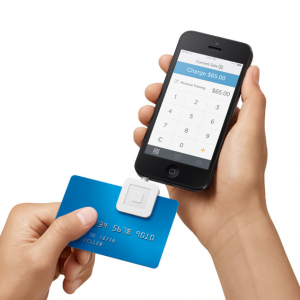![Private Sessions Or Group Classes?]()
by Liz Wyant | Nov 13, 2014 | Business, Training Methods

When new clients contact you, generally the first thing you will be asked about is classes you offer. Most people don’t even think about private training. Knowing whether to guide your clients in the direction of classes or private sessions will help your clients get the most bang for their buck.
Reactive/Fearful Dog
Though there are some incredibly well-run “Reactive Rover” type classes out there, for dogs that cannot be in the same building/vicinity of other dogs or people, classes can just be too much and there will be little to no benefit. Help the client get a solid foundation on the dog through private sessions. If the dog and owner have zero foundation skills, they will struggle in a group class setting.
Young And/Or Untrained Dog
Beginner Obedience classes are probably the most utilized class out there, but are they always the best option? So often, the massive distraction of other dogs and people all combined make it difficult for a young or untrained dog to focus on their owner. Doing even one or two private sessions before putting a dog into a class can make a monumental difference in their ability to focus and benefit from the class.
Owner Needs Special Attention
There are some clients that, for a myriad of reasons, would benefit from one-on-one instruction. Putting an owner like this into a group class just wouldn’t be fair or beneficial to them. This type of owner craves your full attention which cannot be provided in a group class setting. Spend some time with them in private sessions so they can be confident in their abilities before you transition them into a group class.
Specific Training Issue
If you have a client that has attended group classes and continues to have problems getting his/her dog to do a certain behavior, a private session may be in order. This will enable you to focus all of your attention on them and see what the problem may be so you can help them fix it.
Household Issues
Housetraining, intra-household dog aggression, cat/dog issues – many of these are problems that can’t always be solved in a group class. These often require you to go to a client’s home and help them enact feasible management while they work on behavior modification.
What other times do you recommend private sessions versus group classes to your clients?
![Private Sessions Or Group Classes?]()
by Liz Wyant | Nov 8, 2014 | Business

If you are a dog trainer without your own private training facility, you can sometimes feel relegated to holding only private in-home sessions. However, with some creativity and planning, you can hold group classes in many different places.
Public Parks
Public parks can often provide you wide open spaces to hold group classes. They enable you to spread dogs out so even space-sensitive dogs can succeed. Holding group classes in parks is often easier if you have somebody to partner with so that one person can teach while the other can run interference with curious bystanders or loose dogs. Be sure to check any city regulations about using parks for personal gain.
Veterinary Offices
Many veterinary offices have spacious lobbies. They often love having a trainer “on staff,” so to speak, so they can refer clients to you. If you can establish a good working relationship with a vet, it can become mutually beneficial with each party referring potential clients to the other. Classes are a great way to keep clients coming back to their office and you’ll be able to make new relationships with clients.
Local Pet Stores
Most of the big box pet stores have their own staff trainers, but many local pet stores have decent open areas and would love to have a trainer hold group classes there to bring customers in their doors. If you promise to promote their products, they may even allow you to use the space for free. Additionally, holding group classes in a pet store provides for GREAT distraction training!
Parking Lots/Garages
Parking lots/parking garages can be fantastic for group classes. Being on concrete allows for distracted dogs to focus a little more easily, yet there is often still grass close by for potty breaks and sniffing rewards. Also, like public parks, they are very large and permit you to spread your clients out so all the dogs have ample space. Just make sure you have permission to be there.
Halls/Basements
Sometimes churches or AmVets type clubs will rent out their halls or basements for a reasonable fee. Be aware that some may require you to be an active member to get this benefit, but it certainly does not hurt to call around and ask.
Remember that when you are out in public or using somebody else’s space, it is important to leave the space as clean as or cleaner than it was when you arrived. Doing so ensures that you and your clients will always be welcome in the future.
What other places do you use for group training?
Recommended Links
![Private Sessions Or Group Classes?]()
by Monica Callahan | Nov 1, 2014 | Business
Marketing your business can be daunting, but it doesn’t have to be.
Word of mouth is a great way to get more business, but that can take a while to grow. Marketing is the quickest way to build clientele. Most dog trainers lack a background in marketing, and may be intimidated by the process. Here are 3 easy ways to market your new dog training business that you can implement today.

1. Make information packets for local veterinarians, dog walkers, and groomers.
Get in touch with other local animal professionals and start a referral system. Many people ask their vets, groomers, and walkers for a local dog trainer recommendation. Put together folders with tips that dog owners could find valuable, some information on your modern training techniques, and how to get in touch with your business. Don’t forget to include business cards for their lobby!
2. Start a business newsletter or write for a local newspaper.
Keeping your clients up to date on training information and what you are offering will make them more likely to come back. Start a newsletter that you e-mail to subscribers and past clients to keep them in the loop. Writing for a local newspaper or magazine will get your name out there and showcase your knowledge, which will make you more appealing to potential clients.
3. Get a table at your local event.
Many communities have local events that vendors can buy a space or even attend for free. Set up a table with some information of your business and training techniques and a small give-a-way to bring people to your table. Some events you can look for include craft shows, rescue events, and city rec center events.
With a little bit of work, these three marketing techniques can be an easy way to get your name into the community. There are plenty of marketing ideas out there, what are some other easy ways to get your name into the community?
Recommended Articles
![Private Sessions Or Group Classes?]()
by Ines | Oct 27, 2014 | Business

Pricing services can be difficult since there are so many factors included in dog training. These factors include: customer interactions, communication skills, location and travel, education, experience, perceived value, and amount of competition in the area.
Cost Of Operation
Before you can determine a good price point for your services, you’ll want to make sure that the prices will make a net profit after costs are deducted from your profit. If your costs end up being more than profit, you won’t be in business very long. The basic principle of starting a business is to make a living from it.
Target Audience
While it is noble to donate your time to rescues and those that cannot afford to pay you for your services, pricing yourself lower so that more people can afford you is a recipe for burn out. You have to make each client worth your time and energy which means you need to be charging for the value you provide to your customers. Your prices should reflect the audience you want to reach.
Market Research
Location plays a huge role in determining your prices. It would be quite difficult to begin a business if you were the most expensive in the area. Also, it is not to your advantage to be the least expensive in your area because many customers understand that they will get what they will pay for. Being the least expensive tells the community that you do not think highly of your skills. Make sure your prices are competitive, but also exude confidence about your training skills.
Pricing Models
Hourly
Many trainers start off using an hourly fee to price their services. This is a great way to get started. However, as your business grows you’ll discover that you only have so many hours in a day and, thus, can only make so much money each day. Once you start running out of hours in the day, or maybe even sooner, consider changing your pricing model to the following.
Flat Fee
A flat fee pricing model is commonly used for board and train programs because it is more than an hourly commitment. This kind of service can provide a lot of value to clients who can afford it. A flat fee pricing strategy can allow you to make customized training packages for each family you work with and provide them a variety of services to increase their chance of success. For example, you can create a package that includes day training and private lessons for a flat fee based on that family’s needs.
Understand Perceived Value
As dog trainers, we provide incredible value to families everywhere – we give them peace in their lives again. Perceived value is about what the customer thinks they are gaining by hiring you. When clients look for trainers, they aren’t really looking to hire a dog trainer, they are looking to get balance, peace, and control back in their lives again. Understanding perceived value for the customer will help you determine the right pricing for your services.
Pricing can be very difficult for new trainers to understand and implement. Consider reaching out to your mentor and ask them how they first determined their pricing strategy. Most importantly, when customers call, make sure you can articulate how and why your services are worth their prices.
Recommended Articles
![Private Sessions Or Group Classes?]()
by Erin Bessey | Oct 25, 2014 | Business
So you have decided to run your own dog training business but what steps do you need to take to guarantee a successful outcome? Just like a new puppy it requires time, patience, and commitment to be up and running.

Image by Erin Bessey
5 Steps to Building Your Dog Training Business
Work On The Business Part As Much As The Training Part
Work on it, inside and out. It is easy to focus on creating the class curriculum and training the clients and dogs because that is the fun stuff. If you are just starting your business you are the secretary, bookkeeper, marketing manager and you need to be certain to work on those areas in order to grow your business.
Stick To Your Schedule
Make a schedule and stick to it. You can make your schedule as flexible as you want or as rigid but find a time for everything (including yourself) and stick to it. Include places for answering e-mails and phone calls, working on marketing, writing articles or research, continuing education, working with your own dogs, etc.
Learn About Modern Marketing Techniques
Marketing can be done without breaking the bank. Word of mouth is wonderful and free, however, it can take a long time to build. You need to stretch outside of your comfort zone and do more than place business cards and brochures in a few locations. Look into writing a column for the town newspaper, introduce yourself to others in different animal related fields (Veterinarians, Dog Groomers, Walkers & Pet Sitters) and reach out to your community and tell them what sets you apart from others in your field.
Make Your Business Valuable
Value your knowledge and skills. You need to become a good sales person and learn to sell yourself and your packages. Even if you are new to your profession you need to charge professional rates. People equate money with value. If you are $20 less than everyone else in your town or surrounding areas it makes people question why, which may work against you.
Be A Professional
Be the dog trainer and have confidence. People come to you because they need help and this is your area of expertise. You know what is best for the dog and owner to be successful. If that means telling people they need 6 sessions to accomplish the end result, explain that to them. Don’t be afraid of the word “No”. To be afraid of losing the client’s business and only suggesting 3 sessions so it doesn’t seem as expensive is a disservice to the client and the dog. Practice exuding confidence and it will become easier with every client. There’s a saying out there, “Fake it ‘til you make it” which applies for every new business venture.
There will be challenges along the way of running your own business but many who have done it will tell you they’d have it no other way. What is the biggest obstacle stopping you from starting your own business?
Recommended Articles
![Private Sessions Or Group Classes?]()
by Laurie Schlossnagle | Oct 22, 2014 | Business, Training Methods
Open enrollment puppy classes gives clients flexibility and puppies a head start. These classes offer many benefits to all involved – the clients, the puppies, and the instructor(s).

Why You Should Host An Open Enrollment Puppy Class
1) No Waiting To Start Class
Puppies can start as soon as they arrive in the home and have received their required amount of vaccinations. No waiting until the next class starts.
2) Community of Puppy Owners
There are widely varying levels of experience, training, and puppy “issues” in the class – so new puppy families can see that they are not alone and also that there is hope for their puppy. Students also learn from each other.
3) Easy Make Up Policy
If families must miss a class, they can make it up the next time it rolls around. The rolling enrollment model offers far more flexibility with schedules. When coming to class is more flexible, families are more likely to come.
4) Continuous Income
Income from class fees and product sales comes in more steadily and frequently.
5) Stronger Customer Retention
Because the instructor spends more time working one-on-one with each family, they are more likely to continue taking classes with the instructor as their puppy grows up (customer retention).
Implementing an open enrollment puppy class can be challenging (stepping out of a comfort zone), but once it gets up and running, the benefits are huge for all involved.
Recommended Articles
![Private Sessions Or Group Classes?]()
by Liz Wyant | Oct 13, 2014 | Business

As a professional who takes pride in your work, it can be difficult to accept that sometimes you are in over your head. Having a network of other trusted trainers you can either consult with or make a referral to makes you a stronger trainer. There are several reasons you may decide to refer a case on to another trainer.
Not Your Field Of Expertise
What is most of your education/background in? If you do mostly pet obedience, there is no shame in making a referral to another trainer if you have a potential client who is interested in IPO/Protection Sports.
Cases Beyond Your Experience Level
Sometimes cases come along that are just beyond your experience level. If you are a new trainer, it makes sense to make a referral onward if a client has a dog with aggression issues. If you have no experience in training service dogs, this would be a proper time to make a referral. Perhaps when making that referral, ask if you can shadow the other trainer while they work on the case so you can learn more and gain some personal experience. Most modern dog trainers are eager to share their expertise with those newer trainers who are sincerely interested in learning more.
Bias Against Breed Or Owner
This can be a tough one to admit to yourself. Nobody likes to admit that they might have a bias against a person or breed of dog. However, as human beings, it happens. So if a client comes along with a breed of dog that you just inherently have a dislike or distrust of, make a referral to another trainer. The same goes if you just feel you cannot work with the client for some reason.
Don’t Have Time
Some cases require a lot more training hours than others. If you are a part-time trainer and a potential client comes along with a dog that is going to take extensive work, and you just know you will not have the proper time to dedicate to the case, make a referral.
Don’t Have Facility
If you are a trainer that works without a facility, either going to people’s homes or working in public places, there are times you will need to refer cases to those trainers who do have facilities of their own. If a client comes to you with an extremely reactive dog, a trainer with a facility of their own will be better suited to properly set up the environment for the dog to succeed and make progress.
Knowing when to refer clients to other trainers benefits everybody involved. The dogs and clients will get proper, safe instruction. You will create stronger bonds with other local trainers, who might then reciprocate the referral. And the clients will know that you are an honest person who can be trusted, making them more likely to return to you and refer friends/family to you.
![Private Sessions Or Group Classes?]()
by Ines | Oct 10, 2014 | Business
Prepare Your Clients As Much As You Prepare Their Dogs
When you’re starting out as a professional dog trainer, you probably come to lessons prepared with extra treats, a treat pouch, and a clicker. You might even bring a variety of toys in the trunk of your car. This is a wonderful way of being prepared to train your client’s dog, but you can miss out on excellent learning opportunities for the client if they know you always bring the goods anyways.
Create Expectations
 Ensuring that you have the proper tools for training is important to accomplish the training goals you set out to achieve, but we’d like to advise that you let that preparation fall in your clients hands. Encouraging your clients to provide all the necessary equipment helps them in these ways:
Ensuring that you have the proper tools for training is important to accomplish the training goals you set out to achieve, but we’d like to advise that you let that preparation fall in your clients hands. Encouraging your clients to provide all the necessary equipment helps them in these ways:
- It teaches them to think about their dog’s perspective. Reinforcers should be items their dog wants to work for. Ultimately, your clients need to be able to figure this out on their own.
- It teaches them how to be prepared for anything. Having them be responsible for supplying a variety of reinforcers and management tools helps them learn about when and how to use the tools you ask them to provide.
Dog Training Supplies Your Clients Should Supply
Treat Pouch
We’ve taught classes and lessons with and without recommending a treat pouch. We’ve found that, by far, clients who use pouches are less likely to bribe their dogs than those that don’t wear them. Clients that don’t wear treat pouches are more likely to hold a baggy of treats in their hands while training which is essentially bribery. Pouches help keep the food out of the clients hands as they learn how to juggle the leash, clicker, and reinforcers.
Clicker
Not all positive trainers use clickers, but more and more trainers are incorporating them into their training. Having a dog (and owner) that is “clicker savvy” can help address behavior issues down the road. We recommend teaching owners and their dogs at least one behavior with the clicker so that both are familiar with the concept and implementation of it. Check out our favorite explanation of what clicker training is so you’re sure you know how to explain it before you work with your next client!
Low and High Value Treats
One of the most important lessons you can teach a client is how and when to use each treat. Therefore, asking them to bring multiple types of treats to class or to a lesson is a great way to show them when each one will work and why it matters.
6 Foot Leash & Harness
Clients can now purchase a variety of tools to attach to their dogs. You must be extremely specific when recommending a leash and harness. Leashes come in a variety of lengths and structures. If you just say “a leash and collar” you can end up with endless combinations including a flexi-leash with a prong or choke chain! Your directions should get as specific as “Please bring a 6 foot, non-retractable, nylon or leather leash and a front attach Easy-Walk harness.” Anything less and you could end up with a harness that tightens around the dog’s body when it pulls or a double attachment retractable leash!
Relaxation Mat
While you’re speaking and giving instructions in class, the dogs usually get ignored as their humans (hopefully) listen. Providing them a mat to lie on while waiting for the next exercise communicates to them to be patient and gives them concrete information about what they should be doing. It is fairly easy for owners to reinforce their dogs while they continue listening to you speak. This relaxation exercise will help dogs learn how to just “hang out” while their owners pay attention to something else.
Ultimately, placing more responsibility on the client will teach them more important lessons than always bringing the necessities for them. They will be continuing on the training in the future without you so they need to learn those skills sooner rather than later. Share your thoughts about this idea in the comments below!
Recommended Articles:
![Private Sessions Or Group Classes?]()
by Ines | Oct 9, 2014 | Business
Dog Trainers On The Go: Here are the best 3 ways to accept mobile payments.
Most of our time is spent out and about in client’s homes or teaching classes. Taking mobile credit card payments has become necessary, but there are some options that are much better than others. Don’t let companies take more than their competition would! These are our top 3 recommendations to accept credit card payments while you’re on the go.
The Square Up mobile payment system is one of the original mobile payment systems. Its design and system is intuitive and easy to navigate which is great when you’re juggling clients, dogs, and payments at the same time! Here are some of our favorite features about this system:
- Quick and automatic transfer to your bank account in 1-2 days.
- Works on and off-line.
- Email or text receipts.
- Request client’s feedback on their receipts.
- Fee: 2.75% per swipe or 3.5% + $0.15 per manual entry.
PayPal has been a leading force in online payments, but they were not the first to tackle the need for mobile payments. Their system is great to send invoices that are quick and painless to pay which is ideal for client convenience.
- Clients can pay from their own mobile app which eliminates the need for swiping credit cards.
- Get a PayPal Debit Card and use them like a bank account. Receive 1% cash back on signed purchases.
- Fee: 2.7% per swipe or 3.5% + $0.15 per manual entry.
Flint was founded in 2011 and is a solid alternative to Square Up and PayPal. It allows customers to easily pay in person or online and you don’t have to remember an extra attachment for your phone!
- No card readers! Scan instead of swipe.
- 1-2 day deposit into your bank account.
- Connects with Quickbooks.
- Can accept coupons.
- Send automatic reminders and track tools.
- Fee: 1.95% per scan for Debit and 2.95% for Credit.
Accepting mobile credit card payments is an ideal way to make sure you receive payments for your services. Having to constantly email clients to remind them to pay an online invoice is no longer necessary! These companies are here to stay and help with mobile businesses like dog training. Compare the benefits of each and decide which one suites your particular needs the best.
Recommended Articles
![Private Sessions Or Group Classes?]()
by Ines | Oct 1, 2014 | Business
Starting an LLC is as easy as 1, 2, 3!
Starting an LLC is a great way to protect yourself, your assets, and your family when starting a small business such as a dog training business. It is relatively inexpensive compared to filing for incorporation.
1) Choosing A Name
The first step to starting an LLC for your dog training business is finding a unique name that isn’t already being used in your state. Additionally, the name will need to indicate you are an LLC. This means the name should include “LLC” or “Limited Liability Company.” The name cannot contain regulated words such as “bank” or “insurance.” When you file your LLC, the name will automatically be registered with your state so you will not need to file additional documents.
2) Filing
Once you’ve found the perfect name, you’ll want to file the Articles of Organization. That is fancy terminology for a big document that lays out the structure of your new organization. It includes information like your business name, address, and the names of its members. There is usually a several hundred-dollar filing fee. (In Texas, the fee is currently $300.) You’ll also need to specify the Registered Agent for your company. The Registered Agent is simply the person you choose to be in charge of receiving official documents. As with most dog training companies, this will most likely be you!
3) Operating Agreement & Permits
The Operating Agreement is a document that specifies the official roles each person will fill in the company. Most dog training companies are started by one person so this is pretty simple. In fact, most states do not require an Operating Agreement. At this point, you’ll also want to check with your local business regulations. Some cities require business operation permits.
For more information, please check out the U.S. Small Business Administration website. How to Start an LLC is our absolute favorite resource for all the links and resources you’ll need to get started.
Did this information help you? Share your thoughts or questions in the comments below!
Recommended Articles













